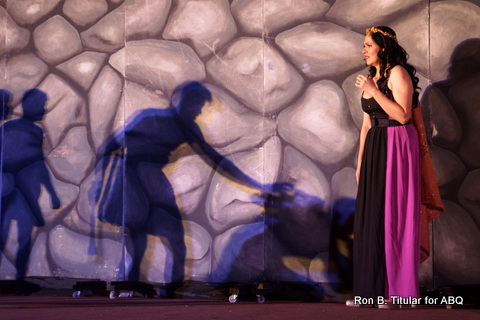But wait [insert screeching tire sound effect here].
While these stories may sound romantic, the reality of the time is something that authors have to contend with when crafting their stories. In all honesty, there are many periods of time where the historical accuracy has to be worked around carefully to insure readers keep what they had for dinner in their stomachs.
 If you have ever been to places such as Scotland, Wales, Ireland, Germany, England or France in the winter time, you know that the weather is one of the first things authors have to contend with. It is flipping freezing! I remember a trip with my wife and I to Paris in November and Ireland in December and it was simply cold!Thank goodness for the wine and whiskey! Now add that element to your romance novels set in the 15th-18th centuries. Remember, there is no Under Armour to keep you warm. There is no central heating and frankly, the fires probably didn't do much, especially if you were trying to get a little snuggle action on that cold floor. According to Ellen Costelow, in a post on Disease in the Middle Ages...
If you have ever been to places such as Scotland, Wales, Ireland, Germany, England or France in the winter time, you know that the weather is one of the first things authors have to contend with. It is flipping freezing! I remember a trip with my wife and I to Paris in November and Ireland in December and it was simply cold!Thank goodness for the wine and whiskey! Now add that element to your romance novels set in the 15th-18th centuries. Remember, there is no Under Armour to keep you warm. There is no central heating and frankly, the fires probably didn't do much, especially if you were trying to get a little snuggle action on that cold floor. According to Ellen Costelow, in a post on Disease in the Middle Ages...
Rushes and grasses used as floor coverings presented a very real hygiene problem. Whilst the top layer might be replaced, the base level was often left to fester. As Erasmus noted:
"The floors are, in general, laid with white clay, and are covered with rushes, occasionally renewed, but so imperfectly that the bottom layer is left undisturbed, sometimes for twenty years, harbouring expectoration, vomiting, the leakage of dogs and men, ale droppings, scraps of fish, and other abominations not fit to be mentioned."
Now, let's consider the cleanliness of the time. Sorry ladies, but telling me your hero smelled of sandlewood and bay rum is probably not happening. Showers? Baths? Bah! If you were lucky to
jump into the river to rinse off, you were doing really well. And laundry? Ummmm? That kilt your hero was wearing was not only for work, it was also used for drying off and then sleeping in when you were out in the fields.
And then let's take some time to talk about the disease and so forth. Costelow also notes in her article...
Filth was a fact of life for all classes in the Middle Ages. Towns and cities were filthy, the streets open sewers; there was no running water and knowledge of hygiene was non-existent. Dung, garbage and animal carcasses were thrown into rivers and ditches, poisoning the water and the neighbouring areas. Fleas, rats and mice flourished in these conditions. Indeed this was the perfect environment for the spread of infectious disease and plague: the Black Death was to kill over half of England’s population between 1348 and 1350.
A lack of hygiene amongst medieval people led to horrific skin complaints. Poor people washed in cold water, without soap, so this did little to prevent infection. The more disfiguring skin diseases were generally classed as leprosy and indeed leprosy, caused by the bacterium mycobacterium leprae, can arise from dirty conditions. It attacks and destroys the extremities of the body, particularly the toes and fingers, and sometimes the nose.
I could go on and on here, but I think you get the idea. This is not exactly the prettiest of times.
Now, does this mean we don't write about it? No! There is nothing wrong with writing about this time period, but the author does need to walk a fine line of telling the truth about the time period and moving too far into the TMI (too much information) aspect of writing.
I have many authors who submit projects to me that are described as being true and authentic, giving the readers an accurate picture of the time. These are research specialists and pride themselves on that accuracy. (Side note here... I should state that many of these are male writers who are submitting stories to me that are only historical and are no where close to being romance or women's fiction). In reality, the only people who would also love to read things and graphic as this would be historians who are simply studying history.

For fiction, however, readers want don't just want the history, they want the entertainment. This is why we have to walk that fine line.
Greek playwrights also knew this. They had the chorus come on stage to tell us what Oedipus does after finding out all of the wonderful things he has just done with his life. Even modern productions of this make sure to move the action off stage or keep it hidden for effect.
As you consider the research for your books, take the time to also consider how much is too much. Remember the readers. If you really want to provide the accurate portrayal of the time, this is where you websites and blog posts are fantastic for providing the historical accuracy of the time. For a great example of this, take the time to visit Greyhaus author, Ann Lethbridge. Her newsletters do a great job of giving insights into the Regency period!

Happy New Year. Another great post.
ReplyDeleteI think this advice can even apply to mysteries: i.e., how much gore is too much gore. There are mysteries I won't read because of too much gore or too many boring details about how forensics works, etc. I personally love historical fiction as well as mysteries, and my favorite reads are those written by authors who know how to walk that fine line.
Agreed!
ReplyDelete